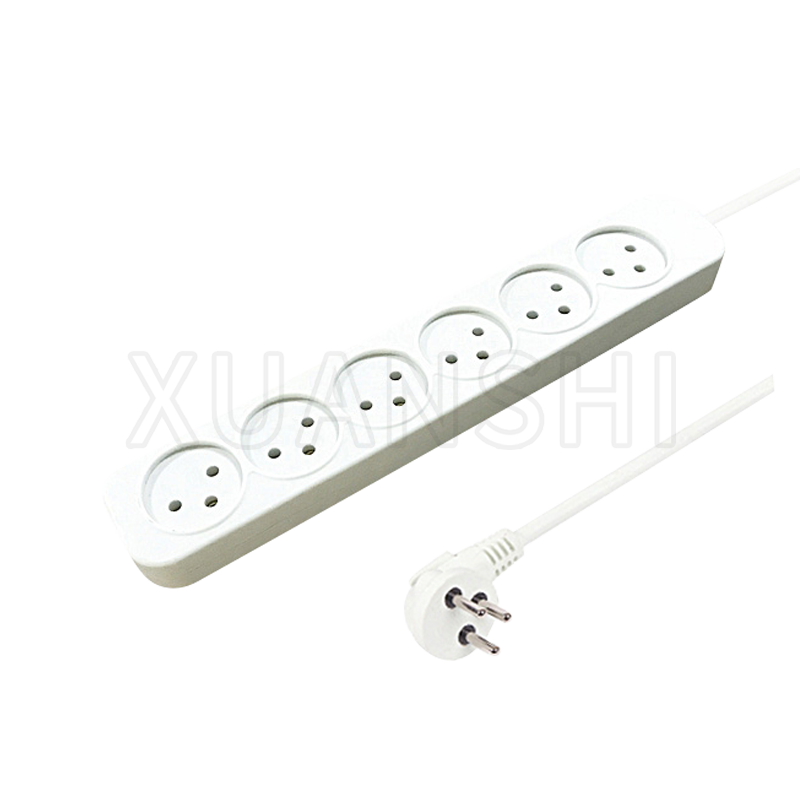Ventilation Holes or Slots: Ventilation is crucial in power strip design to mitigate heat buildup. High-quality power strips incorporate carefully positioned ventilation holes or slots in their casing. These openings serve two primary purposes: first, they allow for the ingress of cooler air into the strip, facilitating convective cooling. Second, they enable the egress of hot air generated by internal components and connected devices. By promoting airflow, these ventilation features prevent thermal congestion within the strip, which can otherwise lead to overheating and potential damage to both the strip and connected electronics.
Heat-resistant Materials: The choice of materials in power strip construction is critical for thermal management. Modern power strips typically utilize advanced thermoplastics or metal alloys known for their high heat resistance. These materials are selected not only for their ability to withstand elevated temperatures but also for their durability and structural integrity over time. Heat-resistant thermoplastics such as polycarbonate or polypropylene provide excellent thermal stability without warping or melting under prolonged use. Similarly, metal alloys like aluminum or steel alloys are employed for their superior heat conductivity and mechanical strength, ensuring the strip remains stable and safe even under heavy loads or in adverse environmental conditions.
Internal Heat Sinks: Advanced power strips often incorporate internal heat sinks as part of their thermal management strategy. These heat sinks are designed to absorb and dissipate heat generated by the electrical components and connected devices. Typically made from materials with high thermal conductivity, such as aluminum or copper, heat sinks efficiently transfer heat away from critical components and distribute it across a larger surface area. This redistribution of heat helps maintain optimal operating temperatures throughout the strip, reducing the risk of localized hotspots that could lead to performance degradation or safety hazards. By enhancing thermal dissipation, internal heat sinks contribute significantly to the longevity and reliability of the power strip under continuous operation.
Spacing Between Sockets: The spacing between sockets on a power strip is carefully considered to accommodate various plug sizes and configurations while also facilitating effective heat dissipation. Adequate spacing between outlets allows for better airflow and reduces the likelihood of thermal congestion around plugs and adapters. This spacing not only enhances user convenience by accommodating bulky power adapters and transformers but also promotes natural convection cooling. Cooler air can circulate freely around each socket, carrying away heat generated by plugged-in devices and internal components. As a result, the power strip maintains more consistent operating temperatures, ensuring optimal performance and prolonging the lifespan of both the strip and connected electronics.
Overheat Protection Mechanisms: To safeguard against potential thermal hazards, many power strips are equipped with advanced overheat protection mechanisms. These safety features continuously monitor the temperature of the strip and automatically shut off power if it exceeds predetermined safe limits. Overheat protection mechanisms typically utilize thermal sensors and circuitry to detect abnormal temperature spikes caused by heavy loads, ambient temperature variations, or internal faults. Upon detecting an overheat condition, the mechanism interrupts power supply to prevent further heat accumulation, thereby protecting the strip and connected devices from thermal damage or fire risks. Overheat protection ensures user safety and peace of mind, particularly during extended use or when operating power strips near their maximum load capacity.
Israel 6 way power strip JL-10A,XS-XB6
